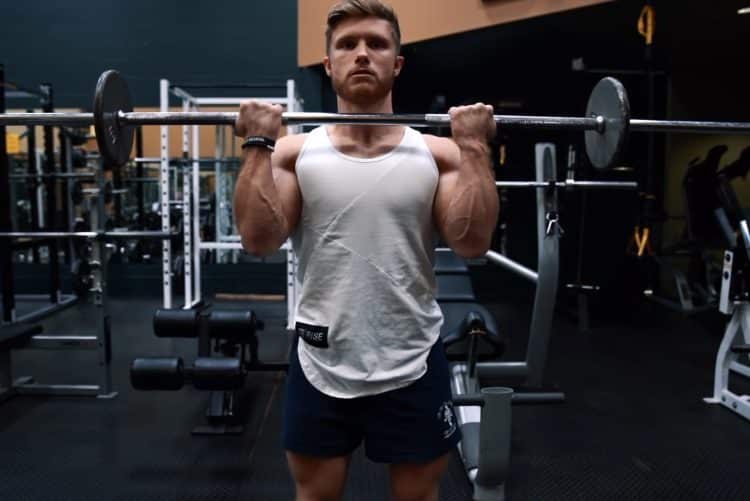Tag: full body workout
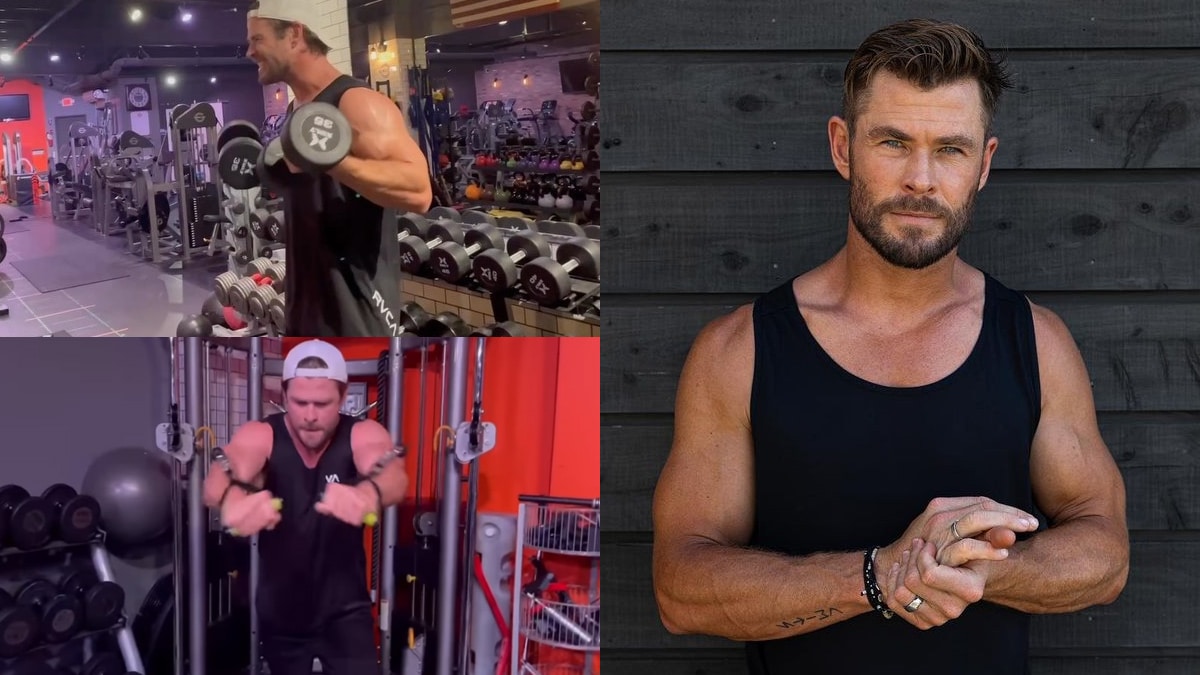
Chris Hemsworth Battles Jetlag with Insane Full-Body Workout
Australia’s Chris Hemsworth is accustomed to flying around the world for a number of acting gigs. In a recent Instagram post, Hemsworth showed off a rigorous full-body exercise routine which he said was performed to alleviate jetlag.
Upon arrival from a long flight, there’s only one thing on Hemsworth’s mind, and that’s to exercise at the gym. In his latest endeavor, Hemsworth headed to celebrity trainer Grant Roberts’ fitness center in Los Angeles. He made it clear his intention was to “kick jetlag in the arce.”
The video montage featured Hemsworth putting his body to work with various exercises such as medicine ball twists, battle ropes, dumbbell bicep curls, overhead press, a round on the assault bike, landmine press, and a brutal variation of the burpee, which involved Hemsworth adding a pull-up to each jump.
Even though it seemed like an unwinnable battle, Hemsworth tried his best to defeat jetlag as noted in his caption. Given his latest exercise routine, it’s safe to say Hemsworth’s commitment to the gym has become his top priority.
Chris Hemsworth Crushes a Full-Body Training Session to Fight Through Jetlag
After a 12-hour flight, Chris Hemsworth kickstarted his recovery with an intense workout.
“Just landed in LA, went 12 rounds with jetlag and lost via split decision. Looking forward to an immediate rematch.
Big thanks to @grantrobertsfit for letting us use the gym!” Chris Hemsworth shared.
“Jet lag one, me zero,” added Hemsworth. “We’re in Grant Roberts’ gym and he’s been kind enough to let us train here. We’re going to kick jetlag in the arse.”
Aside from the training session above, Hemsworth has remained incredibly busy keeping up with his lifestyle tailored around fitness. The Marvel superstar, who played Thor, in Thor: Love and Thunder, kept fans up to date on his training as he showed off a lean and agile physique in a recent sprint training session.
However, it wasn’t just training that Chris focused on. The 39-year-old’s trainer, Luke Zocchi, said that Hemsworth was tasked with eating upwards of 10 meals daily. Ultimately, his efforts paid off as fans were shocked by the mass Chris added to his biceps.
In addition to playing in superhero films, Hemsworth tested the waters as an elite Black Ops mercenary, a role he took on for the Extraction series. In preparation for the project, Hemsworth was required to add a significant amount of muscle mass. He adjusted his training and focused on moving free weights for strength, agility, and power.
RELATED: Joe Rogan Questions Chris Hemsworth’s ‘Natty or Not’ Status: ‘For Sure USADA Isn’t Knocking’ on His Door
Chris Hemsworth is a versatile actor who challenges himself with tough workouts daily. To the delight of fans, Hemsworth always brings charisma to the screen and to his training sessions.
Published: 6 June, 2023 | 12:10 AM EDT
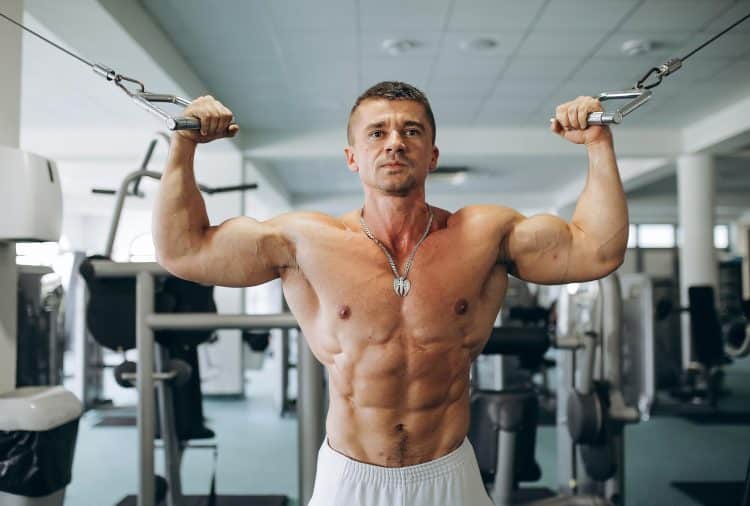
Full-Body Cable Workout for Functional Fitness
Most workouts have a few cable exercises to add variety and achieve optimal stimulus for muscle growth. However, most folks restrict the cable exercises to isolation lifts, such as the cable crossover and straight-arm lat pulldown. Although there is nothing wrong with these exercises, you’re selling yourself short by limiting your cable exercises to single-joint movements.
Cables are versatile training tools that can be used for various exercises to boost hypertrophy, strength, stability, and mobility. Using cable machines solely for achieving a muscle pump with one or two movements at the end of your workout is an inefficient way to use this versatile training tool.
What is Functional Fitness?
Before we get into cable exercises for improving your functionality, let’s take a minute to learn about functional fitness.
Functional exercises involve movements that can help improve your performance in daily activities. These are generally compound (multi-joint) exercises that target multiple muscle groups, such as the deadlift and overhead press.
Functional exercises help improve your strength, balance, coordination, flexibility, and endurance, boosting your performance in daily activities such as lifting, carrying, bending, and reaching.
Contrary to what most people think, you don’t always need barbells, dumbbells, or kettlebells for functional training. You could complete an effective full-body functional workout just with a cable machine.
In this article, we will go over the nine best cable exercises to improve your overall strength, stability, and mobility and program them into a short and effective workout. We will also discover the benefits of adding a full-body functional cable workout into your training regimen.
Total Body Cable Exercises For Improved Functional Fitness
Cable machines offer a versatile middle ground between the freedom of movement provided by free weights, such as barbells and dumbbells, and the fixed range of motion of traditional weight machines. Adding the following cable exercises to your exercise arsenal can help enhance your stability, mobility, and strength:
Cable Squat
The cable squat is an underutilized exercise in most training regimens. Using a cable machine ensures constant tension on your quads throughout the range of motion. Furthermore, since you’ll be performing this exercise using a rope attachment in the front rack position, it will also boost your core strength and balance.
Steps:
Attach a rope attachment to a cable pulley set at the lowest position.
Grab each end of the rope with a neutral (palms facing each other) grip. Hold your hands in front of your chest, like in a goblet squat.
Take a couple of steps back and assume a hip-width stance.
Push your hips back and down as low as possible. The weights should be engaged at the bottom position.
Explode back to the starting position.
Repeat for recommended reps.
Pro Tip: Focus on keeping your back upright throughout the range of motion. Leaning forward will put unnecessary strain on your lower back.
Check out our complete cable squat guide here!
Cable Reverse Lunge
The cable reverse lunge is an underrated lower body exercise that can take your wheel to the next level. Since this is a unilateral exercise, it will also help boost your stability and balance.
Steps:
Set the cable pulley at the lowest setting and hook up a rope attachment.
Grab the ropes with a neutral grip.
Turn around and take a big step forward. Assume a hip-width stance.
Your hands should be placed against your upper pecs.
Brace your core and glutes, and step back with your left foot.
Lower your rear knee until it touches the floor.
Return to the starting position.
Repeat on the right side.
Alternate between sides for the recommended reps.
Pro Tip: Performing the cable reverse lunge on one side before moving onto the other can help achieve a better muscle pump.
Cable Shoulder Press
The cable shoulder press is an excellent exercise for building big and round deltoids. We recommend using a functional trainer instead of a conventional cable machine for this exercise, as it puts you in a better position. This exercise will help improve your overall strength, stability, and overhead mobility.
Steps:
Adjust each end of the functional trainer at the lower setting and fix up a D-handle attachment.
Grab the handles in each hand with a pronated (palms facing forward) grip and assume a hip-width stance.
Your hands should be right over your shoulders at the starting position.
Press the handles overhead by extending your elbows.
Avoid locking out your elbows at the top, as it will remove the tension from your shoulders and put it on your triceps.
Slowly return to the starting position.
Repeat for reps.
Pro Tip: Avoid using momentum in this exercise by jerking your knees and using your lower body.
Check out our complete cable shoulder press guide here!
Cable Split-Stance Chest Press
Performing the cable chest press while standing involves more muscles than the lying variation, as you need to use your core to stabilize your torso. You’ll also feel a lower body engagement when going heavy on this exercise. Plus, since this is a unilateral exercise, it will help you fix your strength and muscle imbalances.
Steps:
Set the cable pulley at chest height and attach a D-handle bar.
Grab the handle in your right hand with a pronated (palms facing the floor) grip and take a step forward.
Assume a staggered stance while maintaining a slight bend in your knees for better balance.
The handle should be at your chest level at the starting position.
Keeping your core stable, extend your arm so it is parallel to the floor.
Pause and contract your pec at the top.
Repeat for recommended reps before switching sides.
Pro Tip: Folks that are short on time can also perform the bilateral variation of this exercise. However, the unilateral version involves the core to a greater degree.
Check out our complete cable chest press guide here!
Cable Deadlift
This is an excellent deadlift variation for beginners, as it helps you drill the movement while lowering your risk of injury. We recommend performing this exercise on a functional trainer. Stand on an elevated platform like an aerobic step to increase your range of motion.
Steps:
Adjust the arms of a functional trainer at the lowest setting and hook up D-handle bar attachments.
Place an aerobic step between the pulleys and stand on it with a hip-width stance.
Lower toward the floor by driving your hips back, bending your knees, and lowering your torso.
Grab the handle with a pronated grip.
Stand straight by driving through your entire feet and extending your knees.
Slowly return to the starting position.
Pro Tip: If you don’t have access to a functional trainer, you could perform a Romanian deadlift by attaching a straight bar to a cable pulley set at the lowest setting.
Check out our complete cable deadlift guide here!
Cable Seated Row
Rowing exercises are incredibly effective at improving your back thickness and density. Perform this lift while seated on the floor for better stability.
Steps:
Adjust the cable pulley to its lowest position and attach a V-handle bar.
Grab the handle with a neutral grip and take a step up.
Sit on the floor and plant your feet flat on either side of the pulley.
Your torso should be upright throughout the range of motion.
Pull the handle to your belly button while driving through your elbows.
Pause and contract your lats.
Slowly return to the starting position.
Pro Tip: Many lifters tend to round their backs during the eccentric (returning) motion. Doing this removes tension from your upper back and puts it on your lats.
Check out our complete cable seated row guide here!
Cable Triceps Pushdown
Although the cable triceps pushdown is an isolation exercise that trains the back of your upper arms, including triceps exercises in your functional workouts can help improve your pressing strength, which can boost your performance in movements like the shoulder overhead press and cable chest press. Plus, lifting heavy on this exercise (without compromising form) also result in core engagement.
Steps:
Set the cable pulley at the highest position and attach a straight handlebar.
Assume a hip-width stance and grab the bar with an overhand grip.
Bend forward slightly.
Keeping your elbows pinned to your sides, extend your arms so they are perpendicular to the floor.
Return to the starting position.
Repeat for recommended reps.
Pro Tip: You could also perform a unilateral variation of this exercise by using D-handle bars for a better mind-muscle connection and core stimulation.
Check out our complete cable triceps pushdown guide here!
Cable Biceps Curl
This is another single-joint exercise that functions as an accessory movement that can improve your performance in pulling exercises like the cable row. Additionally, training your guns can significantly improve your overall physique aesthetics.
Steps:
Adjust a cable pulley machine to the lowest setting and attach a straight bar.
Stand upright with a shoulder-wide stance and grab the bar with a shoulder-wide supinated (palms facing the ceiling) grip.
Keeping your elbows pinned to your sides, curl the bar to your shoulder level.
Pause and contract your guns at the top.
Slowly return to the starting position.
Rinse and repeat.
Pro Tip: Use a functional trainer to perform the unilateral variation of this exercise. It is the closest you can get to dumbbell curls using cables.
Check out our complete cable biceps curl guide here!
Cable Wood Chopper
Most lifters overlook transverse plane exercises. Transverse plane movements help build rotational and anti-rotational strength, improving overall stability and lowering your risk of injury.
Steps:
Set the cable pulley at waist height and attach a D-handle attachment.
Take a step away from the pulley and assume a shoulder-wide stance.
Your right side should be facing the pulley.
Turn to your side and grab the handle with your right hand using a neutral grip; wrap your left hand around your right hand.
Keeping your pelvis stable and arms extended, rotate your torso to the left side.
Slowly return to the starting position.
Repeat for recommended reps before switching sides.
Pro Tip: The cable wood chopper is one of the best exercises to build core stability and balance. Set the pulley at the highest and lowest setting to train your midsection from different angles.
Check out our complete cable wood chopper guide here!
Cable Ab Crunch
This is the most popular cable ab exercise. Building a solid core improves your stability, which carries over to functional movements, such as the deadlift and overhead press.
Steps:
Set the cable pulley at the highest position and attach a rope handle.
Grab the ropes with a neutral grip and kneel on the floor under the pulley.
Your upper arms should be perpendicular to the floor at the starting position.
Pull your chest to your thighs while driving through your elbows and bringing them close to your knees.
Pause and contract your abs at the bottom.
Return to the starting position.
Repeat for reps.
Pro Tip: To engage your core optimally, exhale sharply as you lower the weight (concentric phase) and inhale during the lifting phase (eccentric motion).
Check out our complete cable crunch guide here!
Best Cable Workout For Functional Fitness
Above, we have covered a couple of exercises for each muscle group. You can pick one exercise for each muscle for your full-body cable workout. Further, feel free to change the reps and sets to alter your training volume and intensity as per your experience level and schedule. Here is the total body cable workout you must try in your next training session:
Exercise
Sets
Reps
Cable Deadlift
3-5
8-12
Cable Squat
3-5
8-12
Cable Shoulder Press
3-5
8-12
Cable Split-Stance Chest Press
3-5
8-12
Cable Biceps Curl
3-5
8-12
Cable Wood Chopper
3-5
8-12
Benefits of Full-Body Functional Fitness Cable Workout
Given below are the advantages of adding a full-body functional cable workout to your training regimen:
Improves Functionality
Folks that train to improve their overall health and physical performance should prioritize functional exercises. Adhering to the functional cable workout listed in this article will improve your overall strength, stability, and mobility, boosting your performance in daily activities.
Furthermore, the cable machine is a versatile training equipment. You can perform several variations of the same lifts by switching your grips, using different handles, or changing the height of the pulley.
Short Workouts
Cable workouts are generally shorter than free-weight workouts, making them a better fit for people running a tight schedule. Changing weights on a barbell back squat takes longer as you have to load and de-load weight plates. On the other hand, cable machines have a selectorized weight mechanism, meaning you can change the weight on the bar using a pin which only takes a few seconds.
Plus, since cable workouts are shorter, they help maintain a higher training intensity, which can result in greater calorie burning. You can also use advanced training principles like supersets and drop sets to turn up the heat.
Flexible Movement Trajectory
Unlike rigid machines, cable machines have a flexible movement path. You can adjust the pulley height to train your muscles from different angles, which is also not possible with free weights. For example, you cannot perform a split-stance chest press using dumbbells. The cable’s flexible movement path allows you to train your pectoral muscles while standing upright and extending your arms in front of your torso.
Most cable exercises have a short learning curve, making them beginner-friendly. Newbies can use the cables to establish a mind-muscle connection to achieve optimal target muscle stimulation.
Keeps Constant Tension on Muscles
This is the main USP of cables. Performing cable exercises help maintain constant tension on your muscles throughout the range of motion, which is not the case with most free-weight exercises.
If your typical training sessions mainly involve barbells and dumbbells, switching to full-body functional cable workouts can help introduce variety to your workouts, aiding in breaking through strength and muscle plateaus.
Reduces the Risk of Injury
Most cable exercises are low-impact movements that don’t overexert your joints. These lifts involve smooth concentric and eccentric motions, lowering your risk of injury during training. You must spend 5-10 minutes before a workout performing a mix of static and dynamic warm-up exercises to further reduce the odds of injury.
Wrapping Up
Lifters that want to build strength, stability, and mobility without overexerting their joints, tendons, bones, and ligaments should try the fully-body cable workout for functional fitness. The versatility of the cable machine allows you to mimic real-world movements, such as bending and lifting, pulling, and pushing, which can improve your performance in daily chores.
Integrating the workout in this article into your training regimen will add variety to your workouts, making your training sessions more interesting and helping you break through strength and muscle plateaus. Do the cable functional workout once weekly for 12 weeks, and the results will speak for themself. Best of luck!
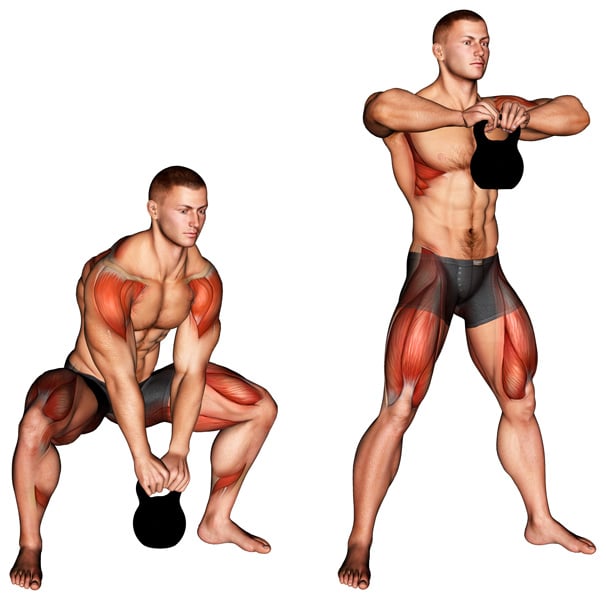
Kettlebell Sumo High Pull — How To, Variations and Muscles Worked
The kettlebell sumo high pull (or kettlebell sumo deadlift high pull) is a functional exercise that also builds strength and muscle throughout the entire body. It combines a deadlift and upright row, and, therefore isn’t just a simple movement which is why it’s so effective. Consequently, it’s not the best option for beginners to try…
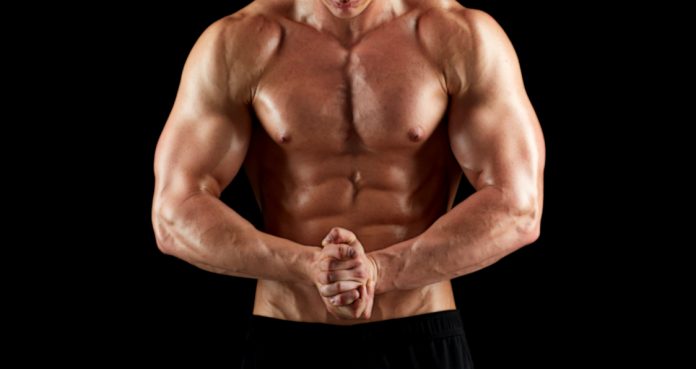
Natural Bodybuilding: 3 Awesome Old School Principles to Live By
Train like an old school, natural bodybuilder.
When it comes to natural bodybuilding, the old school players new exactly how to train for the best results. They held to principles that were far more simplistic in order to get the most gains. Before steroids were introduced as an option for bodybuilders, athletes had to train differently.
While there are tons of supplements and even gear to be utilized in the modern age, for a natural athlete looking to keep themselves completely clean, old school bodybuilding theory and practice is definitely the avenue to travel down.
Here are some great principles to live be as a natural bodybuilder looking to make solid, quality gains.
Full Body Workouts
Training splits were handled far differently back in the old days. The major difference was that a bodybuilder aimed to train the entire body in one workout rather than focusing on individual muscle groups on a given day. There was no chest day or back day or leg day. Instead the focus was on training the entire body as a unit.
For the most part bodybuilders trained three times a week with a Monday, Wednesday, and Friday approach to their split. On those days they would target everything from the chest, shoulders, back, legs, and arms, training every muscle group with classic staples like the bench press, squats, barbell rows, and far more.
Perhaps the biggest drawback of this approach is that it could be time consuming meaning a lifter would stay in the gym for extended periods of time. This can be modified these days by either choosing to add an extra day to the process and reducing volume or by simply mixing and matching body parts. Whatever body part is lacking can be doubled up on or trained on every day of the split, while stronger body parts can be trained once or twice a week.
Volume
Speaking of volume, reps and sets in old school bodybuilding were also treated differently. Usually reps and sets were 10×10 (10 reps, 10 sets) on each particular exercise. That kind of volume for each body part meant the muscles were getting absolutely thrashed during every training session. That kind of volume meant the muscles would be taking a great deal of damage in order to adapt and grow.
This immense volume would also increase muscle strength, hormone production, and even bone density. Training in this manner can be punishing which is why you’ll need proper rest in order to prevent your body from breaking down.
Recovery
Which leads us to another ideology, recovery. For those using steroids and other forms of gear, recovery is as simple as one, two, three. For those of us wishing to keep their bodies clean and free of foreign agents, being sure to have a solid recovery day in mind is absolutely paramount.
There’s a reason that the old school bodybuilders trained every other day. If you’re putting yourself through a full body workout then it’s necessary to take those off days and use them to recovery from the thrashing you put your body through the day before. Steroid users have the benefit of recovering fast due to the extra help.
As a natty, the only alternative is resting your body, which means having more down time, but ultimately if your goal is to avoid anabolic substances then this is going to be your best and only option. Exercising patience is ultimately the key to success as a natty.
For more news and updates, follow Generation Iron on Facebook, Twitter, and Instagram.
*Header image courtesy of Envato Elements.

